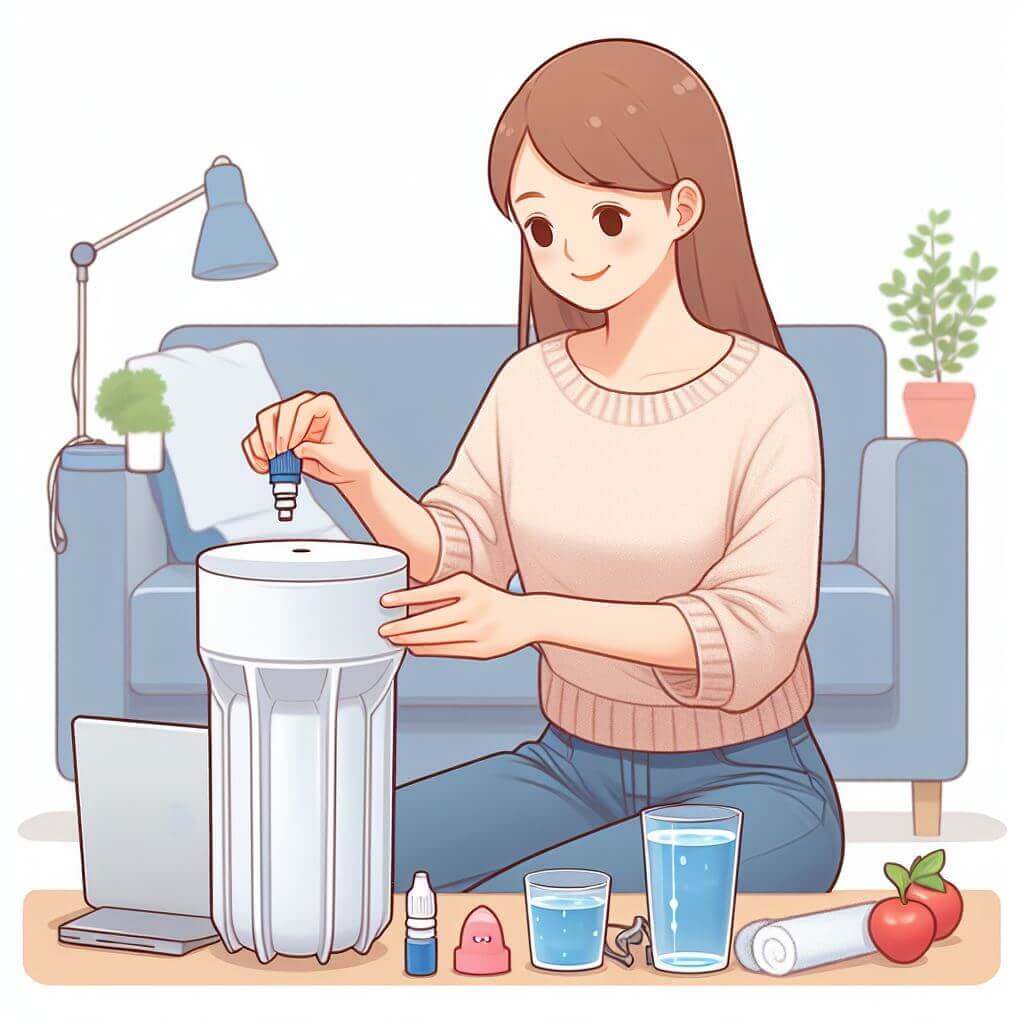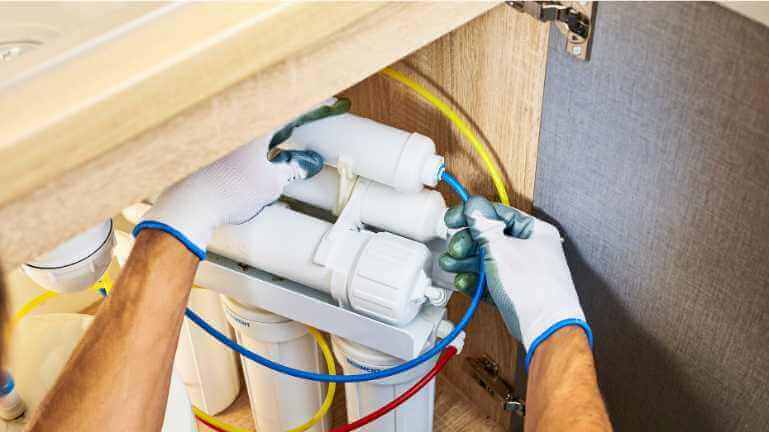Water filters are an essential part of our daily lives, ensuring that the water we consume is clean and free from harmful contaminants. They play a crucial role in maintaining our health and well-being. This article aims to provide a comprehensive guide on the importance of water filters, how they work, and the significance of changing them regularly.
Understanding the workings of water filters and the necessity of changing them is vital for anyone who uses them. This article will delve into the different types of water filters, how often they should be changed, and the signs that indicate a need for change. It will also provide a step-by-step guide on how to change a water filter and what to do after changing it.
Moreover, this article will address common mistakes made when changing water filters and how to avoid them. It will also answer frequently asked questions about changing water filters and provide tips for maintaining your water filter. So, let’s dive in and learn more about the fascinating world of water filters.
Key Takeaways:
- Water filters are essential for clean, safe drinking water, removing contaminants like bacteria and heavy metals.
- Regularly changing water filters maintains their effectiveness, preventing clogs and health risks.
- Signs indicating a need for a filter change include decreased water flow and changes in taste or smell.
- Filter change frequency varies by type, with pitcher filters every 2 months, faucet filters every 3 months, and refrigerator filters every 6 months.
- Wait at least 15 minutes after changing a filter before using the water, ensuring proper engagement and contaminant removal.
- Maintain filters by flushing after replacement, monitoring for signs of wear, and testing water quality regularly.
Understanding Water Filters
Water filters work by removing impurities from water through a physical barrier, a chemical process, or a biological process. They can filter out a range of contaminants, including bacteria, viruses, heavy metals, and organic materials, ensuring that the water you consume is safe and clean.
There are several types of water filters available on the market, each designed to remove specific types of contaminants. Some of the common types include activated carbon filters, reverse osmosis filters, ultraviolet (UV) filters, and ceramic filters. Each type has its own unique features and is suitable for different needs and water conditions.
Choosing the right water filter depends on the quality of your water source and the specific contaminants you want to remove. It’s essential to understand how each type works and its effectiveness against different contaminants to make an informed decision.
| Type of Filter | Contaminants Removed |
|---|---|
| Activated Carbon Filters | Chlorine, sediment, and volatile organic compounds (VOCs) |
| Reverse Osmosis Filters | Lead, mercury, fluoride, arsenic, bacteria, and viruses |
| Ultraviolet (UV) Filters | Bacteria, viruses |
| Ceramic Filters | Bacteria, protozoa, and sediment |
Importance of Changing Water Filters
Changing water filters regularly is crucial for maintaining their effectiveness. Over time, the filter media can become clogged with contaminants, reducing its ability to filter out impurities. This can result in poor water quality and potential health risks.
Not changing water filters can also lead to other issues. For instance, a clogged filter can reduce water flow, causing your system to work harder and potentially leading to damage. Moreover, bacteria and other microorganisms can build up in the filter, posing a risk of contamination.
To keep your water clean and your filters working well, you should follow the manufacturer’s instructions on how often to replace them. Regularly changing your water filters is a small step that can make a big difference in your health and the longevity of your water filtration system.
Signs That Your Water Filter Needs Changing
There are several signs that your water filter may need changing. One of the most obvious is a decrease in water flow. If your water is coming out slower than usual, it could be a sign that the filter is clogged and needs to be replaced.
Changes in the taste or smell of your water can also indicate that your filter needs changing. If your water starts to taste different or has an unusual smell, it could be a sign that the filter is no longer effectively removing contaminants.
Physical signs can also indicate a need for change. For instance, if you notice sediment or particles in your water, it could be a sign that the filter is not working properly. Always pay attention to these signs to ensure that your water filter is functioning effectively.
How Often to Change Different Types of Water Filters
The frequency of changing water filters depends on the type of filter and its usage. For instance, pitcher filters typically need to be changed every two months or after filtering 40 gallons of water. Faucet filters usually last for about 100 gallons of water or approximately three months.
Refrigerator filters, on the other hand, should be changed every six months. However, if your water has a high level of contaminants or if you use your water filter frequently, you may need to change it more often.
Always refer to the manufacturer’s instructions for the recommended filter change frequency. Regularly changing your water filter ensures that it continues to provide clean, safe water for you and your family.
| Type of Filter | Change Frequency |
|---|---|
| Pitcher Filters | Every 2 months or after filtering 40 gallons of water |
| Faucet Filters | Approximately every 3 months or after filtering 100 gallons of water |
| Refrigerator Filters | Every 6 months |
Factors That Influence When to Change a Water Filter
The quality of your local water supply can significantly influence when to change a water filter. If your water source has a high level of contaminants, you may need to change your filter more frequently. Regularly testing your water can help you determine the level of contaminants and adjust your filter change schedule accordingly.
The amount of water you use can also affect how often you need to change your filter. If you use a lot of water, your filter will reach its capacity sooner, requiring more frequent changes. Keep track of your water usage to ensure that you’re changing your filter as needed.
Other factors, such as the type of filter and its capacity, can also influence when to change a water filter. Always refer to the manufacturer’s instructions for the recommended change frequency and adjust as necessary based on your water quality and usage.
Steps to Change a Water Filter
Changing a water filter is a relatively straightforward process, but it’s important to follow the correct steps to ensure that it’s done properly. Here’s a step-by-step guide:
- Turn off the water supply to the filter.
- Remove the old filter. Depending on the type of filter, this may involve unscrewing it or popping it out.
- Insert the new filter. Make sure it’s aligned correctly and fits snugly.
- Turn the water supply back on.
- Run water through the filter for a few minutes to flush out any carbon particles and air bubbles.
Remember to take safety precautions when changing a water filter. Always turn off the water supply to avoid leaks and potential water damage. Also, be careful not to over-tighten the filter, as this can cause damage.
After changing the filter, check for leaks and ensure that the water flow is normal. If you notice any issues, refer to the manufacturer’s instructions or contact a professional for assistance.
How Long to Wait After Changing a Water Filter
After changing a water filter, it’s important to wait before using the water. This allows time for the filter to properly engage with the water supply and start effectively removing contaminants.
The length of time you should wait depends on the type of filter and the manufacturer’s instructions. Generally, it’s recommended to wait at least 15 minutes after changing a filter before using the water.
Factors that can influence how long you should wait include the type of filter, the quality of your water, and the amount of water you use. Always refer to the manufacturer’s instructions for the recommended wait time and adjust as necessary based on your specific circumstances.
What to Do After Changing a Water Filter
After changing a water filter, it’s important to flush the system. This involves running water through the filter for a few minutes to remove any carbon particles and air bubbles. Flushing the system ensures that the filter is working properly and helps to maintain the quality of your water.
It’s also a good idea to check if the new filter is working properly. You can do this by testing the water for contaminants or checking the water flow. If you notice any issues, refer to the manufacturer’s instructions or contact a professional for assistance.

Remember to keep track of when you changed the filter and when it’s due for the next change. Regularly changing your water filter is crucial for maintaining its effectiveness and ensuring the quality of your water.
Common Mistakes When Changing Water Filters
Changing a water filter may seem like a simple task, but there are common mistakes that people make. One of the most common is not changing the filter regularly. As mentioned earlier, a clogged filter can reduce its effectiveness and lead to poor water quality.
Another common mistake is not flushing the system after changing the filter. This can result in carbon particles and air bubbles in your water, affecting its taste and quality.
Over-tightening the filter is another common error. This can damage the filter and cause leaks. Always ensure that the filter is snug but not overly tight.
To avoid these mistakes, always follow the manufacturer’s instructions when changing a water filter. Regularly check your filter and change it as needed to ensure that it’s working effectively.
The Impact of Not Waiting Long Enough After Changing a Water Filter
Not waiting long enough after changing a water filter can have several impacts. One of the potential health risks is the presence of carbon particles and air bubbles in your water. These can affect the taste and quality of your water and may pose a health risk if consumed.
Not waiting long enough can also impact the effectiveness of the filter. It takes time for the filter to properly engage with the water supply and start effectively removing contaminants. Using the water too soon after changing the filter can result in poor water quality.
Therefore, it’s important to wait the recommended time after changing a water filter before using the water. This ensures that the filter is working effectively and provides you with clean, safe water.
Tips for Maintaining Your Water Filter
Maintaining your water filter is crucial for ensuring its effectiveness and longevity. Here are some tips:
- Change your filter regularly, as recommended by the manufacturer.
- Flush the system after changing the filter to remove any carbon particles and air bubbles.
- Check your filter regularly for signs that it needs changing, such as a decrease in water flow or changes in the taste or smell of your water.
- Keep track of when you changed the filter and when it’s due for the next change.
- Test your water regularly to check for contaminants, and adjust your filter change schedule as necessary.
By following these tips, you can ensure that your water filter continues to provide clean, safe water for you and your family.
Frequently Asked Questions About Changing Water Filters
How often should I change my water filter?
The frequency of changing water filters depends on the type of filter and its usage. Refer to the manufacturer’s instructions for the recommended change frequency.
How do I know when to change my water filter?
Signs that your water filter needs changing include a decrease in water flow, changes in the taste or smell of your water, and the presence of sediment or particles in your water.
What happens if I don’t change my water filter?
Not changing your water filter can result in poor water quality and potential health risks. It can also reduce water flow and potentially damage your system.
How long should I wait after changing a water filter before using the water?
It’s generally recommended to wait at least 15 minutes after changing a filter before using the water. However, refer to the manufacturer’s instructions for the specific wait time.
Conclusion
To keep your water quality high and your water filtration system working well, you need to change your water filters regularly and follow the manufacturer’s instructions. Changing your water filters helps remove contaminants and impurities from your water and prevents clogging and damage to your system. After changing your water filter, you should wait for a certain period before using the water, as this allows the filter to flush out any air and debris.
You should also be aware of some common mistakes that people make when changing water filters, such as using the wrong filter type, size, or brand, or not replacing the filter housing or o-rings. To avoid these mistakes, you should check the manual for your water filtration system and follow the steps carefully. You can also use some tips to maintain your water filter, such as cleaning the filter housing, checking for leaks, and testing the water quality.
By changing your water filters regularly and correctly, you can enjoy the advantages of clean, safe water and extend the lifespan of your water filtration system. So, don’t neglect your water filter, and make sure you change it when needed.

Ross Walters, an Electrical supplies and Water Appliances specialist, shares his extensive expertise on top platforms. With a focus on empowering professionals and enthusiasts, Ross delivers up-to-date insights and practical advice. His commitment to staying abreast of industry trends establishes him as a trusted source for navigating the complexities of electrical systems and water appliances.

